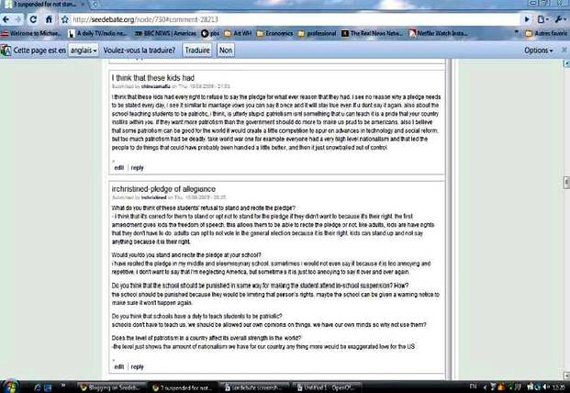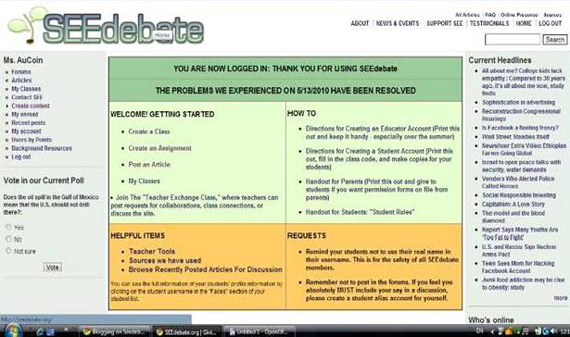Blogging Using SEEdebate.org
Pamela AuCoin
Blogging is a way to get students excited about writing. Effective bloggers are strong persuasive writers, who have demonstrated a thorough understanding of the assigned text.
There are many ways to incorporate blogging into your classroom. An easy tool is SEEdebate, a website which maintains its own articles on discussion-provoking topics. SEE (Student Educational Exchange Inc) is a non-profit organization providing online learning tools for educators and students. SEEdebate is created for educators, and the site administrators have designed a very teacher-friendly site. SEEdebate regularly posts articles, videos, and polls to SEEdebate users for open response; teachers may also add their own articles for SEEdebate public discussions. I find that students enjoy public discussions on controversial social issues the most. My school is in Queens, New York, and New Yorkers can be surprisingly provincial. For them, hearing from a peer in the Midwest is an exciting and eye-opening experience.
A sample exchange:

The best aspect of SEEdebate is that teachers can not only create their own exchanges, but may opt to limit who gets to participate in the blogging assignment. While global exchanges are undeniably exciting, some teachers may prefer to limit which students can see and join the discussion. This past year, I worked with a teacher in Martinique, and we chose to keep closed discussions. Here's how to create your own assignments:
Steps:
- Go to www.SEEdebate.org
- Create an “educator” account, listing your class(es) in the profile.
- Provide your class account code to your students, so they can create their own class accounts.
- Click on "create content" within the grey bar on lefthand side.
- Click on "exchange"
- Type in your title, assignment in the "Body" box.
- Select subject areas, source url, and audience (note: if you want your assignment private, unclick the "public" box
- Click submit.

You may choose to create your own questions; I prefer to give them "questions to consider," but make it clear that students are not limited to answering those questions. While teachers can monitor them, SEEdebate does not permit teachers to join in on the discussions, which means the dialogue is completely student-centered.
Usually after a blogging assignment, I refer to the blogs in class, and use them as springboards for class discussion. This is empowering for students, especially those who are less likely to talk during class hours, but passionate bloggers. I have also created writing prompts from their blogs.
Do
you have a comment or suggestion? E-mail
Pamela
|